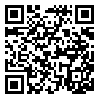Volume 2, Issue 4 (9-2015)
jbrms 2015, 2(4): 18-23 |
Back to browse issues page
Download citation:
BibTeX | RIS | EndNote | Medlars | ProCite | Reference Manager | RefWorks
Send citation to:



BibTeX | RIS | EndNote | Medlars | ProCite | Reference Manager | RefWorks
Send citation to:
Rezaie M J, Farzizadeh M, Naleini F, Rostamzadeh A. Dominance in hands and cross-sectional area of median nerve in carpal tunnel syndrome. jbrms 2015; 2 (4) :18-23
URL: http://jbrms.medilam.ac.ir/article-1-109-en.html
URL: http://jbrms.medilam.ac.ir/article-1-109-en.html
Kurdistan University of Medical Sciences , ayoobrostamzade@gmail.com
Abstract: (4857 Views)
Introduction: Currently, neuroresearchers report that the median nerve shows severity-correlated intracarpal enlargement in idiopathic carpal tunnel syndrome (CTS) as a most common peripheral neuropathic disorder. The purpose of this paper was to investigate ultrasonography morphological findings in patients with idiopathic CTS and comparing some physical properties such as age, gender, BMI with dominancy in the hands.
Materials and methods: This research was a cross sectional study that conducted in Al-Zahra hospital. 125 patients who came to ultrasonography department for any reason were studied randomly and selected by a convenience method. The thickness of median nerves of these patients was measured by ultrasonography and analyzed based on age, sex, BMI and dominancy and non-dominancy in hand for each patient separately as main aim of our study. The data collected entered to computer and analyzed by SPSS software. The chi- square and t-student tests were used for data analysis.
Results: The mean cross-sectional area of right median nerve in right-handed patients was 0.063±0.02 cm2 and for left median nerve in the same group was 0.056±0.022 cm2. Results demonstrates differences in cross-sectional area of median nerve in dominant hand in comparison to non-dominant-hand in right-handed ones (P<0.001). Again, mean cross-sectional area of left median nerve in left-handed patients was 0.064±0.013 cm2 and for right median nerve in the given group was 0.057 ± 0.017 cm2.
Conclusion: No relation between median nerve, BMI and age was existed and probably we can apply ultrasonography as a diagnostic imaging tool to distinguish between competent and non-competent median nerves.
Type of Study: Research |
Subject:
Orthopedics
Received: 2015/04/13 | Accepted: 2015/05/23 | Published: 2015/10/9
Received: 2015/04/13 | Accepted: 2015/05/23 | Published: 2015/10/9
Send email to the article author
| Rights and permissions | |
 |
This work is licensed under a Creative Commons Attribution-NonCommercial 4.0 International License. |




